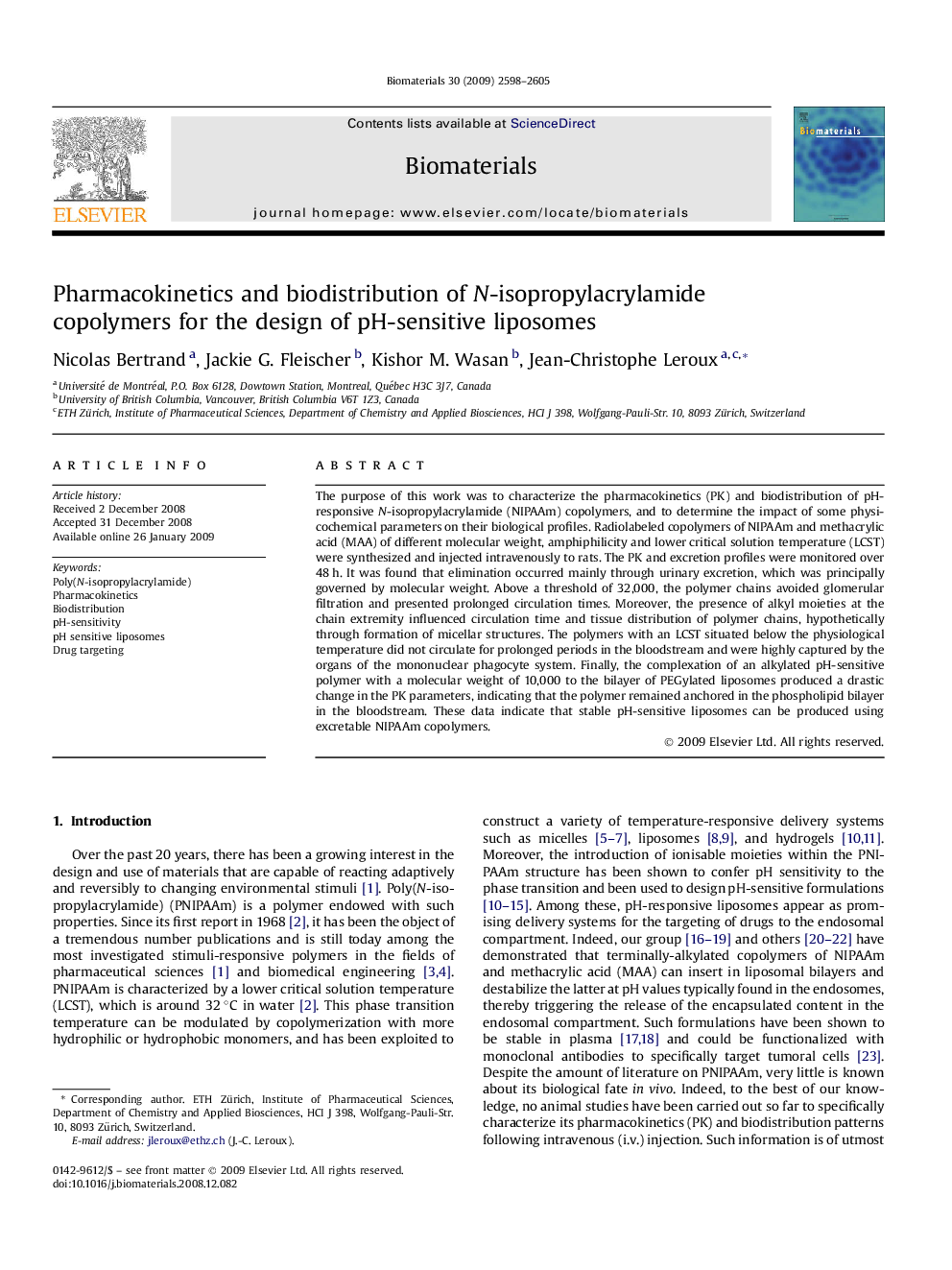| Article ID | Journal | Published Year | Pages | File Type |
|---|---|---|---|---|
| 10400 | Biomaterials | 2009 | 8 Pages |
The purpose of this work was to characterize the pharmacokinetics (PK) and biodistribution of pH-responsive N-isopropylacrylamide (NIPAAm) copolymers, and to determine the impact of some physicochemical parameters on their biological profiles. Radiolabeled copolymers of NIPAAm and methacrylic acid (MAA) of different molecular weight, amphiphilicity and lower critical solution temperature (LCST) were synthesized and injected intravenously to rats. The PK and excretion profiles were monitored over 48 h. It was found that elimination occurred mainly through urinary excretion, which was principally governed by molecular weight. Above a threshold of 32,000, the polymer chains avoided glomerular filtration and presented prolonged circulation times. Moreover, the presence of alkyl moieties at the chain extremity influenced circulation time and tissue distribution of polymer chains, hypothetically through formation of micellar structures. The polymers with an LCST situated below the physiological temperature did not circulate for prolonged periods in the bloodstream and were highly captured by the organs of the mononuclear phagocyte system. Finally, the complexation of an alkylated pH-sensitive polymer with a molecular weight of 10,000 to the bilayer of PEGylated liposomes produced a drastic change in the PK parameters, indicating that the polymer remained anchored in the phospholipid bilayer in the bloodstream. These data indicate that stable pH-sensitive liposomes can be produced using excretable NIPAAm copolymers.
